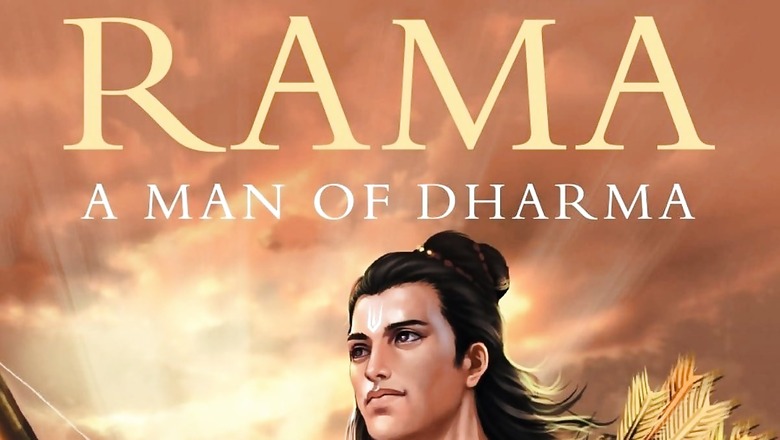
views
In 1847, the British East India Company hired a philologist, Max Mueller, to translate the Vedas specifically to make the Hindu intelligentsia dismiss them as barbaric, backward and fanciful. The hope was that the changed attitude of some influential groups will soon spread throughout Indian society, liberating it from its perceived paganism.
Mueller was not a missionary but seemed to have a religious zeal. We realise this intent in his letters. He wrote to his wife: “I feel convinced, though I shall not live to see it, that this edition of mine and the translation of the Veda will hereafter tell to a great extent on the fate of India, and on the growth of millions of souls in that country. It is the root of their religion, and to show them what that root is, I feel sure, the only way of uprooting all that has sprung from it during the last 3,000 years.” (Oxford, December 9, 1867)
Along the same lines, Mueller wrote to the theologian, Chevalier Bunsen: “India is much riper for Christianity than Rome or Greece were at the time of St Paul. The rotten tree has for some time had artificial supports… For the good of this struggle, I should like to lay down my life, or at least to lend my hand to bring about this struggle… I do not at all like to go to India as a missionary; that makes one dependent on the parsons… I should like to live for ten years quite quietly and learn the language, try to make friends, and see whether I was fit to take part in a work, by means of which the old mischief of Indian priestcraft could be overthrown and the way opened for the entrance of simple Christian teaching.” (August 25, 1856)
The disdain for Vedic philosophy with which Mueller embarked on his translation of the Vedas is apparent: “The ancient religion of India is doomed, and if Christianity does not step in, whose fault will it be?” (Written to the Secretary of State for India, the Duke of Argyll, December 16, 1868)
“The worship of Shiva or Vishnu and the other popular deities, is of the same, nay, in many cases of a more degraded and savage character than the worship, of Jupiter, Apollo and Minerva; it belongs to a stratum of thought which is long buried beneath our feet, it may live on like the lion and the tiger but the mere air of free thought and civilised life will extinguish it.” (Westminster Lectures on Missions, December 1873)
Excerpts from Mueller’s letters express his opinion that the culture of the Aryans brought by earlier European conquest sorely needed replacement. In a communication to the Duke of Argyll, he wrote: “India has been conquered once, but India must be conquered again, and that second conquest should be a conquest by education. Much has been done for education of late, but if the funds were tripled and quadrupled, that would hardly be enough… A new national literature may spring up, impregnated with Western ideas, yet retaining its native spirit and character… A new national literature will bring with it a new national life, and new moral vigour. As to religion, that will take care of itself. The missionaries have done far more than they themselves seem to be aware of.”
With this mindset, Mueller propounded the famous Aryan Invasion Theory (AIT) in the mid-19th century, based on two main factors: racial eminence and comparative linguistics. Alleging the Vedic people’s European origin, he claimed that a band of tall, fair-skinned nomadic pastoralists from the Russian Steppes, called the Aryans, crossed the Himalayas on horse-driven chariots in 1500 BC. Being a superior race, they subjugated the unsophisticated dark-skinned aboriginals, whom they pushed south of the Vindhyas to become the Dravidians.
The colonising Aryan invaders then settled in the north and civilised the land, completely eradicating the local culture. They imposed Sanskrit and the Vedic lifestyle on the natives and were responsible for all ancient Sanskrit literature.
According to Mueller, the conquering Aryan race began composing the Vedas soon after their arrival, starting with the Rig Veda, which he dated at 1200 BC. They also formed the Vedic caste system, declaring themselves the upper-caste Brahmins and the natives the lower-caste Shudras.
This hypothesis implied that Brahmins and Shudras were of different racial ancestry, and since genetic study was unknown at the time, the supposition was accepted as fact. Then, in the 1920s, Mohenjo-Daro and Harappa, dating back to 3000 BC, were excavated.
Although the discovery of these highly advanced urban civilisations demonstrated that the indigenous people were far from unsophisticated aboriginals as previously believed, surprisingly, it did little to cast doubt on the Aryan Invasion Theory.
Instead, the narrative was neatly amended to fit the new information suggesting that the Indus Valley inhabitants, although evolved, were the peaceful dark-skinned pre-Vedic natives. They fled south when the Aryans, who had a technological edge in the form of horse-driven chariots unknown to the locals, attacked and defeated them. As a result, the prevailing culture was entirely replaced by an imported Vedic one indicating the invaders’ superiority.
The concept of Aryan supremacy fuelled white nationalism in Europe. Hitler notably adopted the false narrative of a master race, along with a distortion of the word Arya and the holiest of Vedic symbols, the Swastika. Finally, in the latter part of the 20th century, when archaeological evidence proved conclusively that no invasion had occurred, the theory was modified to a peaceful migration and then further amended to a “trickling in”.
Despite the many iterations of how the Vedic culture came to India, whether by violent invasion, peaceful migration or people trickling in, the core assertion has remained that in 1500 BC, foreigners replaced the pre-Vedic local culture and language of North India with their own. The claim that the Vedic culture was imported rather than indigenous is still touted, though it is refuted by literature, archaeology and science.
Motivating factors for AIT at inception
The thought that the language of a subjugated people was the source of most European languages, including English, was abhorrent to imperialists. In his 1650 work, The Annals of the Old Testament, Archbishop James Ussher propounded that the first day of creation was October 23, 4004 BC. Most Christian scholars firmly held this belief during the colonisation of India, and the Vedic civilisation did not fit into this.
According to the biblical timeline, a highly evolved people could not have lived thousands of years before the Earth was supposed to have come into existence. Furthermore, the ecclesiastic chronology insisted that God destroyed the whole world by a flood around 2348 BC, so the Vedic civilisation posed a considerable problem.
To tie in with biblical events, Mueller fixed the anomaly by ascribing 1500 BC for the Aryan invasion when Sanskrit and the Vedic culture ostensibly came to India. The Aryan Invasion Theory was politically convenient.
It served to divide and rule, effectively controlling the natives by justifying British colonisation with an ancient precedent. The concept of invading Aryans was fed to the Indian population through the westernisation of education, beginning with Thomas Babington Macaulay’s Indian Education Act of 1835.
While the theory had apparent advantages for the ruling power, many Indians also embraced it, as it put them on the same racial footing as their rulers. The idea that foreigners displaced native Indians had far-reaching effects.
It effectively divided the nation, with north and south Indians believing they were racially, linguistically and culturally distinct from each other. The ancient varna system’s meritocracy was also replaced with birth-based caste and Brahmin eminence based on their perceived superior Caucasian ancestry.
Excerpts from Priya Arora’s book, ‘Rama: A Man of Dharma’ (Penguin India). Views expressed in the above piece are personal and solely those of the author. They do not necessarily reflect News18’s views.




















Comments
0 comment